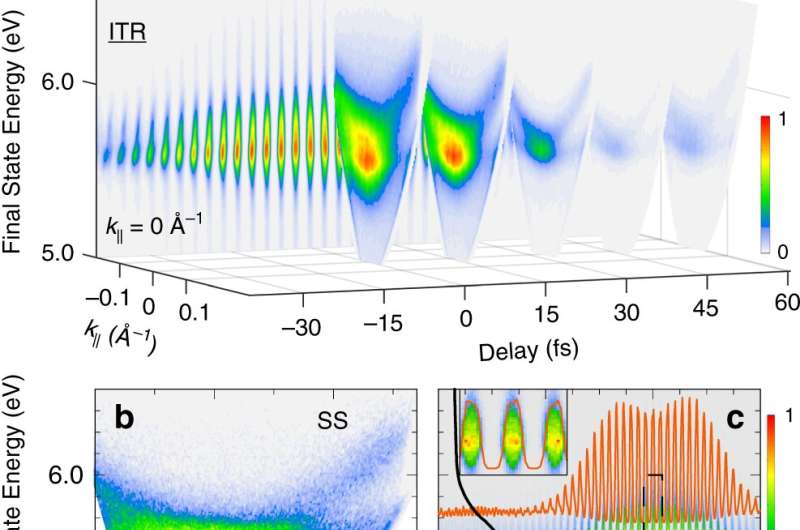Study shows optical fields can modify electrons in metal

Pittsburgh research coauthored by team from the Department of Physics and Astronomy reveals that optical fields have the ability to modify electronic properties of a solid.
The paper, "Coherent multidimensional photoelectron spectroscopy of ultrafast quasiparticle dressing by light," describes how applying intense optical fields to electrons in metals can change how electrons flow between the ions. Researchers discovered applying optical pulses in the range of 10-14 seconds to a copper surface can change its electronic properties, for example, its electron conduction or optical reflection.
The paper was coauthored by Hrvoje Petek, the R.K. Mellon Professor of Physics and Astronomy, graduate students Andi Li and Zehua Wang and Marcel Reutzel of The University of Göttingen in Germany. It was published in Nature Communications in May.
The results answer questions about the nature of the electronic properties of solids that have only recently been anticipated, said Petek.
"It has long been known that one can apply strong optical fields and change electronic properties of atoms and molecules. This is called "dressing" of the electronic structure. Solids are much more dense than atoms, so it has not been clear whether applying a strong optical field would first damage the material or dress its electronic structure. The researchers found that metals are rather robust, and judicious application of optical fields will actually cause the dressing to occur," he said.
Petek said the results open the door for new areas of research and could introduce a range of new innovations by using light to control the properties of matter.
"One can think of how to apply such fields to create new properties of solids with potential applications in conventional electronics, quantum computing, or entirely new applications where one introduces light into solids to generate entirely new properties on very short time scales," he said. "Theorists have considered that such dressing could be used to study in a laboratory how black holes evaporate."
The team will next explore how to combine several different metals, along the lines of those found in electronic devices, to determine if it's possible to dress their electronic structure without causing damage.
More information: Marcel Reutzel et al. Coherent multidimensional photoelectron spectroscopy of ultrafast quasiparticle dressing by light, Nature Communications (2020). DOI: 10.1038/s41467-020-16064-4
Journal information: Nature Communications
Provided by University of Pittsburgh




















